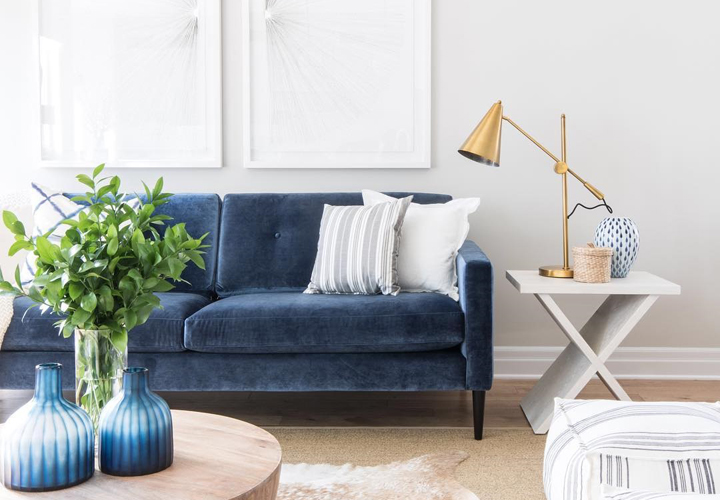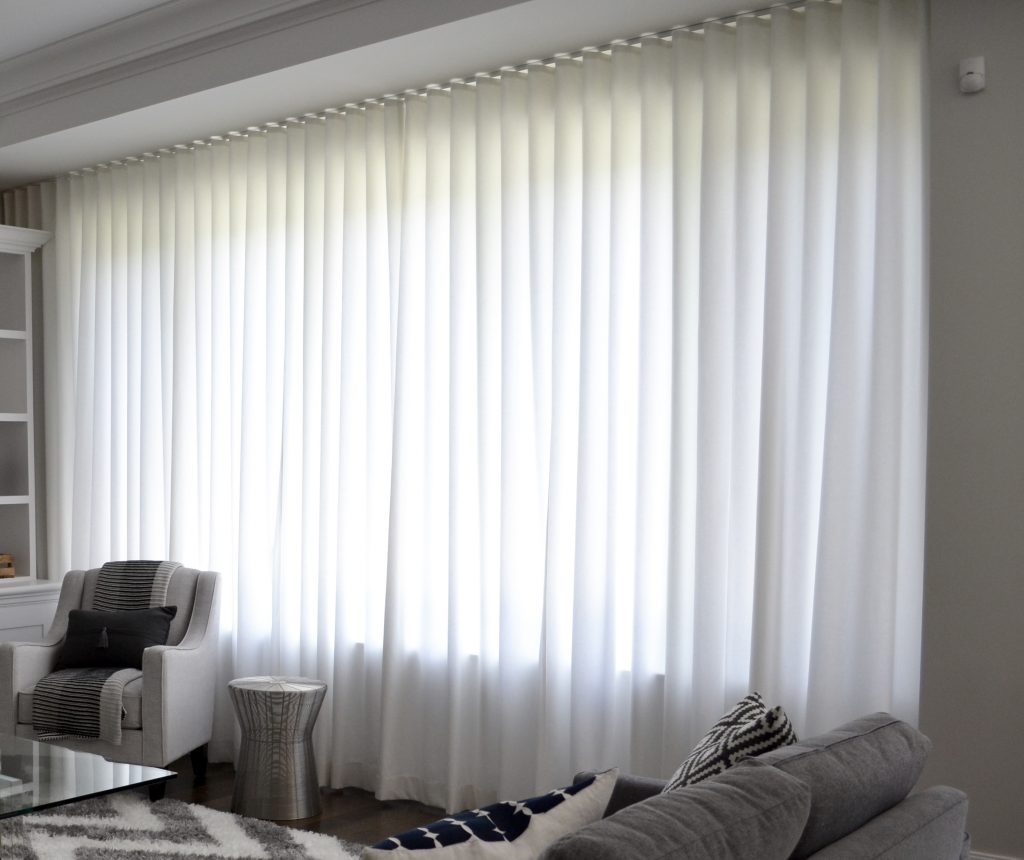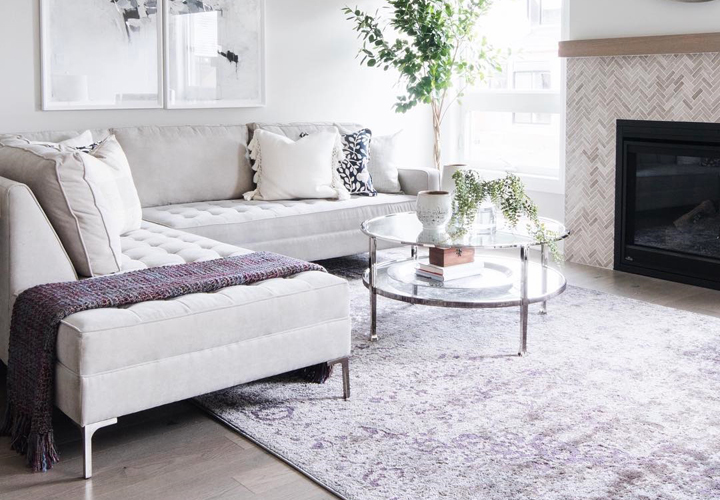
Brian McCourt is a contractor, design expert and co-host of HGTV Canada’s Backyard Builds.
Remember that time you saw a beautiful sofa in passing, and when you peered at the price tag, your jaw dropped in disbelief? Or the time you got an estimate for custom curtains in your new home and gave it the split second, wide-eyed nope.
But what does a high-quality couch even mean? And what’s the difference between those $59.99 curtain panels and the fabric fortune this custom guy is charging? Basically, how are we to distinguish a budget item from an investment piece?
I hear you – and I’ve done plenty of research over the years to guide my clients in the right direction based on price, quality and logic. Here’s the fast-track for sofas, curtains and area rugs.
Sofa (Price Range: $1,000 – $10,000+)
I’m going to break down sofa quality into three basic parts: the frame (made from MDF, plywood or solid hardwood) the cushion (which could break down in a matter of months or last the test of time) and the fabric (rub count, thickness and material).

The Frame
• Medium-Density Fibreboard (MDF) is made from recycled wood fibres and resin. It’s inexpensive, paints well and is fairly easy to work with, but every material has a drawback, and in the case of MDF, it’s strength. A low-budget couch is likely constructed from MDF and will not survive your kids’ first wrestling match.
• Plywood is made from thin layers of wood laminated together in opposing directions. The result is a very stable product that resists warping and has a great amount of strength. It’s not the traditional furniture making material, but can be just as strong as solid wood and usually costs slightly less.
• Hardwood (kiln dried) is the cat’s meow of sofa construction. Oak and maple are the most common woods used to make quality furniture and have proven to stand the test of time. When investing thousands into a sofa, you’ll want to make sure its frame was crafted from hardwood.
The Cushion
Have you ever plopped down on a sofa expecting to sink right in, but instead landed with a sudden thud, muttering OMGTH (oh my gosh that’s hard)? I have, sometimes landing so hard that there’s an extra letter in there.
There are many different foam products that range in quality. In my experience, if a new piece of furniture is extremely stiff, it will “break in”, but it also deteriorates and loses its shape very quickly. A high-end foam will keep its shape for years and should be comfortable from the start.
Here’s where things can get extra pricey: the wrap. Most sofas have an inexpensive polyester batting wrapped around the cushions. With many high-end options, you’ll find feather down, which is comfortable but controversial due to a history of unethical practices (a quick Google search could enlighten you into choosing synthetic down options). Synthetic down fill is cheaper than actual feather down and is comparable in comfort and quality (it’s also washable!). This is one case where the less expensive option is better.
The Fabric
Every fabric has a rub count (or “double rub count”). The bare minimum for a sofa fabric is 15,000 double rubs. I don’t know, maybe they have a robot rubbing fabric all day to get these numbers, but there is a process that measures its “rub-gevity”. The higher the rub count, the more durable the fabric, and therefore the more expensive. Then there are details like thickness, pattern, embroidery and piping. The average sofa requires 20 yards of fabric, and at $50 to $100 a yard, it’s a pricey piece.
Curtains (Price Range: $200 to $3,000+)
It takes a trained eye to know the difference between ready-made curtain panels and custom ones, but once you go custom, you’ll never go back. Ready-made panels are often cheaply constructed with limited size options and thin fabric. They also use a lot less fabric to cover a window, making the overall aesthetic fall flat when the curtains are closed.

Let’s loosely break things down to understand the expense of going custom, based on a standard four-foot window: fabric ($450), liner ($150), sewing labour ($400), carriers ($75), hardware ($225) and install ($250) for a total of $1,550 to cover a modestly sized window using well-priced materials. That’s a lot of money for one window!
The difference is in the amount of fabric used. A ready-made panel may have three yards of fabric per panel, where a custom equivalent will have six yards or more. This is where the trained eye comes in to appreciate the depth of the folds, which remain even when the curtains are closed. The perfect fitted window dressing, quality of the hardware and smooth gliding tracks are a few of the reasons why some homeowners are willing to spend more money outfitting their windows than on the windows themselves.
Area Rug (Price Range: $300 – $10,000+)
Rugs. Perhaps the hardest item to wrap your head around spending a fortune on, considering you walk all over it. Here’s the thing about rugs – the more expensive the material, the harder it is to clean. This is one area where I think the design world has gone a little bonkers ($100,000 rugs?!). There’s a lot to admire about a handwoven silk rug: the craftsmanship, the appreciation of labour and the cultural design influences to name a few, but if your anxiety has you shallow breathing every time you have company over for a glass of wine, it might be time to reevaluate.

Natural fibres like wool tend to absorb liquid well, which is prime for stain grabbing. Silk rugs are delicate and difficult to clean without damage. Some people will argue and say you can wash by blotting the stain, but in my experience, blotting doesn’t work. Aggressively rubbing the splotch is the only way I’ve had success. Needless to say, I do not have a wool or silk rug at home.
Synthetic materials like polyester and nylon are the least absorbent, making them easier to clean and (bonus!) easy on the budget. Low-quality poly can look cheap, but a higher-end synthetic rug can look great and is perfect for high-traffic areas. My advice is to use natural fibre rugs only in rooms with low to medium traffic (and purchase the appropriate cleaner before the stains occur).
Main image, sofa and rug photo courtesy of Leclair Decor; curtain photo courtesy of Brian McCourt.
HGTV your inbox.
By clicking "SIGN UP” you agree to receive emails from HGTV and accept Corus' Terms of Use and Corus' Privacy Policy.



